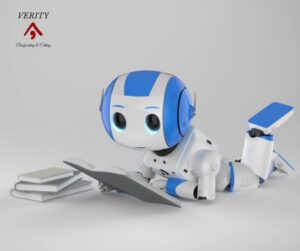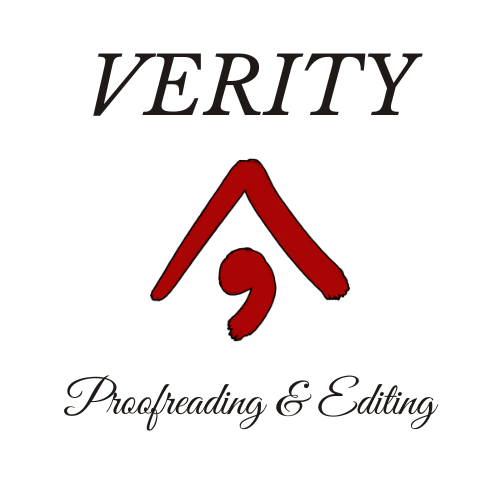In the age of ChatGPT, Grammarly, and other advanced writing tools, it’s tempting to believe that AI can replace the sharp eye of a human editor.
After all, AI is fast, affordable, and never tires of scanning your text for grammar mistakes. But here’s the hard truth: AI can’t catch your plot holes—and plot holes are one of the fastest ways to lose your readers.
At Verity Proofreading & Editing, we work with self-published and traditionally published authors all over the United States. Again and again, we see the same issue: polished grammar, but broken story logic. Let’s break down why this happens—and how to make sure it doesn’t happen to you.
What Is a Plot Hole, and Why Do Readers Notice?
A plot hole is any gap or inconsistency in your story’s logic, timeline, or worldbuilding. It might be as obvious as a character who’s in two places at once—or as subtle as a small but important detail that’s contradicted later in the book.
Examples we’ve spotted in client manuscripts include:
- A character’s name changed mid-story.
- Two characters who met days ago, but then reference something they did together a few months ago.
- A sudden solution to a problem that ignores or contradicts earlier details.
Readers—especially in genres like mystery, thrillers, and science fiction—spot these mistakes instantly. And when they do, their trust in your story breaks.
Why AI Tools Miss Plot Holes Every Time
 AI tools are trained to analyze language, not logic. They look for:
AI tools are trained to analyze language, not logic. They look for:
- Grammar and punctuation errors
- Misspelled words
- Awkward sentence structure
But they don’t know your characters, setting, or rules. They can’t remember that you introduced a plot twist in Chapter 5 that contradicts the reveal in Chapter 17. They won’t flag that your villain’s motive suddenly changes without explanation.
AI can make your sentences cleaner—but it can’t make your story airtight.
How a Human Editor Protects Your Story
A professional editor does more than fix typos. At Verity Proofreading & Editing, we check for:
- Continuity: Making sure events, character traits, and settings remain consistent.
- Pacing: Ensuring the story flows naturally without jarring jumps or dead spots.
- Cause and Effect: Making sure every event in your story has a logical reason to happen.
- Reader Immersion: Flagging anything that might pull your reader out of the experience.
We also bring real-world experience from working with Amazon KDP authors who know that good reviews depend on both strong writing and flawless story logic.
Using AI the Right Way
We’re not saying you shouldn’t use AI. It can be a great assistant for:
- Catching obvious typos
- Suggesting alternative phrasing
- Helping brainstorm dialogue or scene ideas
But think of AI as a power tool—it can make your job faster, but without skill and oversight, it can also cause damage. Pair AI’s efficiency with a professional editor’s judgment, and you’ll get the best of both worlds.
Your Story Deserves to Be Airtight
 Plot holes can cost you reviews, credibility, and future readers. But with a thorough edit focused on both mechanics and logic, you can deliver a story that keeps readers hooked until the very last page.
Plot holes can cost you reviews, credibility, and future readers. But with a thorough edit focused on both mechanics and logic, you can deliver a story that keeps readers hooked until the very last page.
If you’re ready to make sure your book is polished, consistent, and unforgettable, let’s work together.
📚 Melissa Nichols – Verity Proofreading & Editing
Your message, polished with purpose.
👉 VerityProofreading.com
Frequently Asked Questions About AI and Plot Holes
- Can AI editing tools find plot holes in my story?
No. AI tools are designed to scan for language-based issues such as grammar, punctuation, and spelling errors. While they may occasionally point out a confusing sentence, they don’t understand your plot, characters, or the internal rules of your story. This means AI can miss inconsistencies, contradictions, or missing information that a human editor would catch. - What’s the difference between a grammar error and a plot hole?
A grammar error is a technical issue—like a misplaced comma or incorrect verb tense—that can be spotted with rule-based checks. A plot hole, on the other hand, is a logical gap in the story. It might be a character acting out of character without explanation, an event that contradicts an earlier scene, or an unresolved subplot. Grammar tools can fix sentence mechanics, but they can’t assess whether your story’s events make sense from start to finish. - How do professional editors find plot holes?
Human editors read with the entire story in mind, not just one sentence at a time. We pay attention to timelines, cause-and-effect relationships, character consistency, and worldbuilding details. If something doesn’t match up—like a clue introduced in chapter three that never comes up again—we flag it. This careful attention to detail ensures the story remains believable and satisfying for readers. - Can I use AI and a human editor together?
Yes—this can be the best of both worlds. AI can help clean up surface-level issues before your manuscript reaches an editor, which may save you time and money. Then, a human editor can focus on deeper storytelling issues such as plot consistency, pacing, and reader engagement. Used together, AI and human editing can produce a polished, professional book while avoiding costly oversights. - What happens if I publish a book with plot holes?
Readers notice—and they talk about it in reviews. Even one glaring inconsistency can pull a reader out of the story, lower your ratings, and discourage future readers from buying your work. In the competitive self-publishing market, strong reviews are essential for visibility and credibility. Fixing plot holes before you publish protects your reputation and keeps your audience coming back for more.

